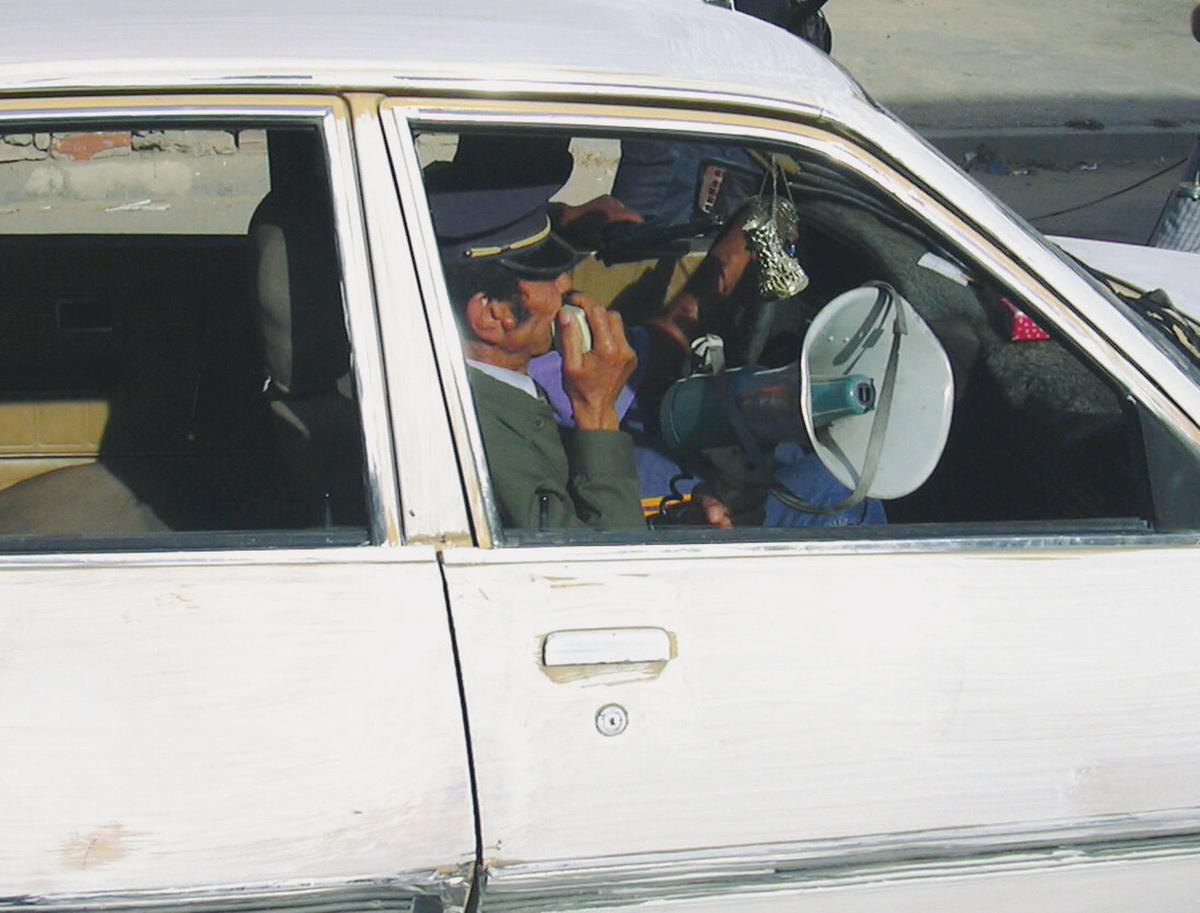
I Had No Money and Now I’m Loaded. Misery to Get Rid of the Booze. Tarzan of the Arabs. Moncef Kahloucha’s films are blockbusters in his hometown of Kazmet, in Sousse, Tunisia. With a passion for 70s genre movies, Kahloucha — a house painter by day — shoots his features on an old-school VHS Panasonic 3500, casting otherwise bored, unemployed locals in the key roles. Middle Eastern documentary filmmaking and humor generally make uneasy — if not absent — bedfellows, but director Nejib Belkadhi’s portrait of Kahloucha, and the action on the set of his latest film, is very funny. Belkadhi opens his film in Italy, among a group of nostalgic Tunisian immigrants who’ve borrowed a VCR for a night of watching Kahloucha movies. From there, he returns to Kazmet, alternating interviews with the director with action-packed footage from the set.
Belkadhi’s zeal for film and for his subject is infectious, and he demonstrates a deft hand in leading his audience with him along that thin line between laughing at and laughing with. Bidoun had a conversation with Belkadhi while he was trudging the snowy pavements of the Sundance Film Festival this past January.
Antonia Carver: How did you first come across Moncef Kahloucha, and come up with the idea for the film?
Nejib Belkadhi: My producer, Imed Marzouk, told me about Kahloucha back in 1997 — he knew him through Kahloucha’s cameraman. Since then I’ve had one thing in mind: to film this colorful character and tell other people about his crazy passion for films. In 2000, I used to host and direct a show for the TV channel Canal+ Horizons, in Tunis, and decided to shoot with Kahloucha. Once in his district, I was struck by the inhabitants of the neighborhood and their stories and thought that one day we should make a feature about Kahloucha and his district. In 2003, after founding our company, Propaganda Production, we decided to start the shoot in the most independent way — the film was completely self-financed.
AC: Was it ever difficult to explain to Moncef and his cast and crew what you were attempting to do?
NB: Kahloucha is more passionate about acting than directing. He creates and directs films just to star in them. By the time we decided to shoot with him, he was flattered that a whole crew was going to follow him daily and expose his passion and life to the public. He was aware of being the center of the whole thing. To be honest, we felt like he and the neighbors were being slightly fake in the first two days of shooting, as they were trying to show off, they weren’t at all themselves. We had a long discussion with Kahloucha and explained to him the aim of our work and the fact that we needed people to be natural. Two days later, we felt quite invisible as a crew — we were already part of the district, people got used to the camera and didn’t notice us. That’s when the real film began.
AC: The film is warm in its humor: we laugh knowingly with Moncef, but never at him. Did you ever feel the film ran the danger of mocking him? Was this something you were conscious of during the shoot?
NB: This was maybe the most dangerous thing in the film. Kahloucha is a colorful character who mixes comedy with action in his movie — he’s not afraid of ridicule, and his approach is quite hilarious. So people laugh at his acting because he definitely wants them to laugh. We had to keep at a distance and expose the world of Kahloucha without mocking him. It’s obvious that the [Tunisian] audience would be laughing during our film, laughing with him and not at him. I think it’s because we love the character. Our film is not about showing a freak — Kahloucha is above all a passionate human being.
AC: You’re at Sundance to show your own film. Have you seen any other films there that you’d recommend?
NB: Petr Lom’s On a Tight Rope, and the winner of the world cinema competition, The Legacy by Gela Babluani and Temur Babluani.